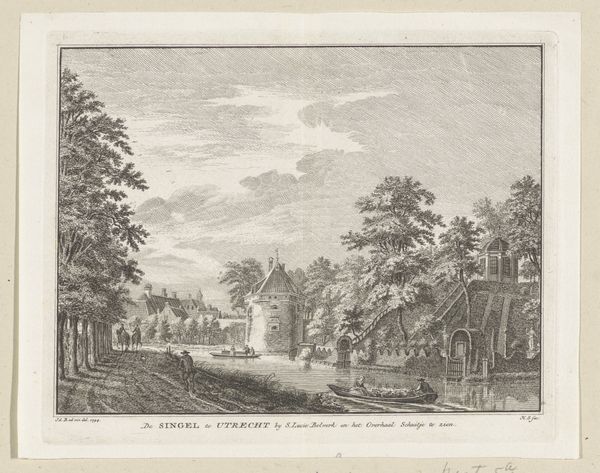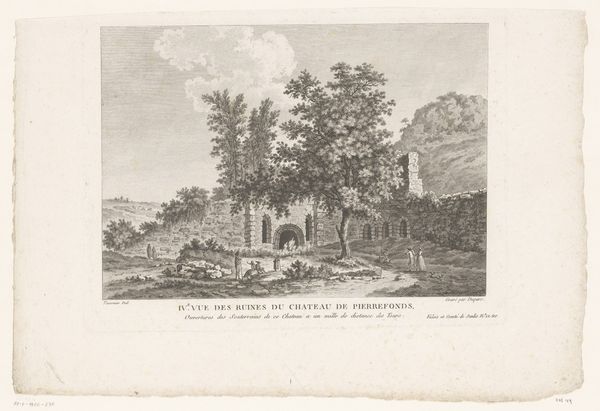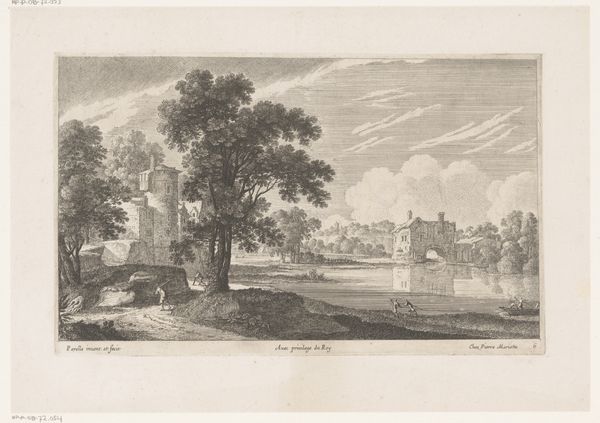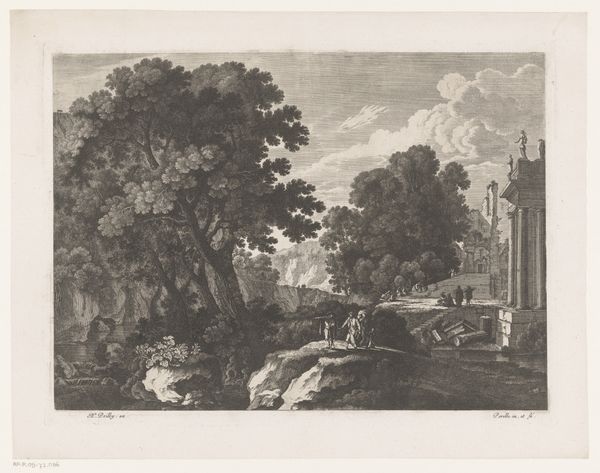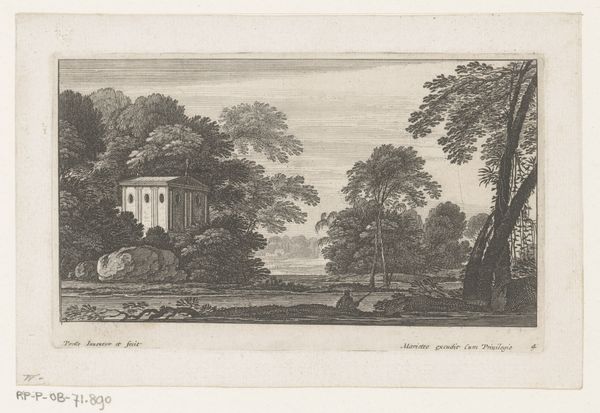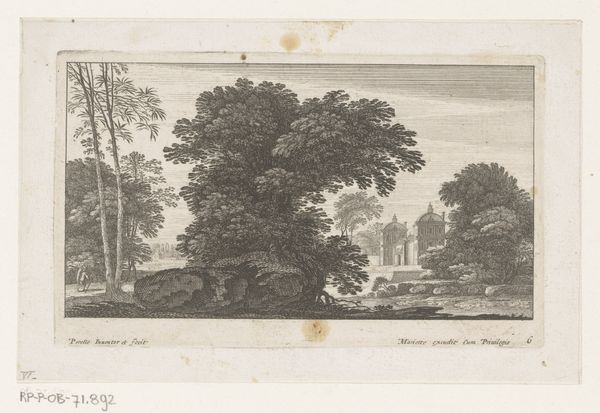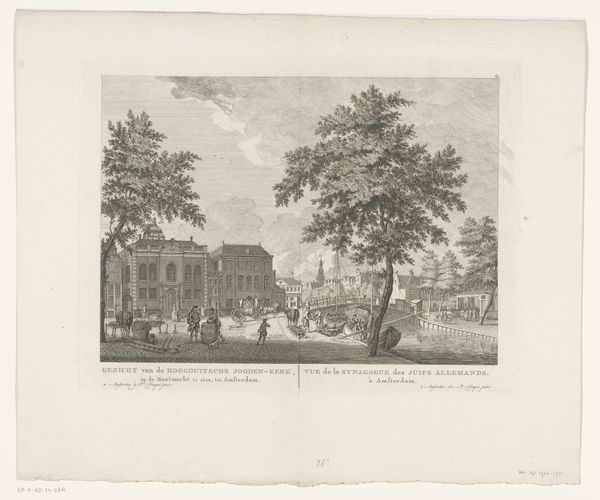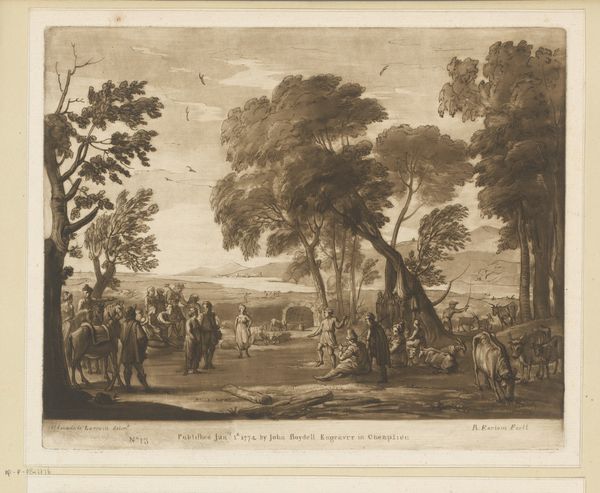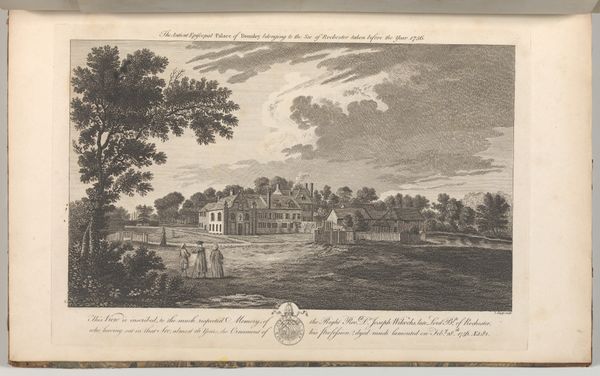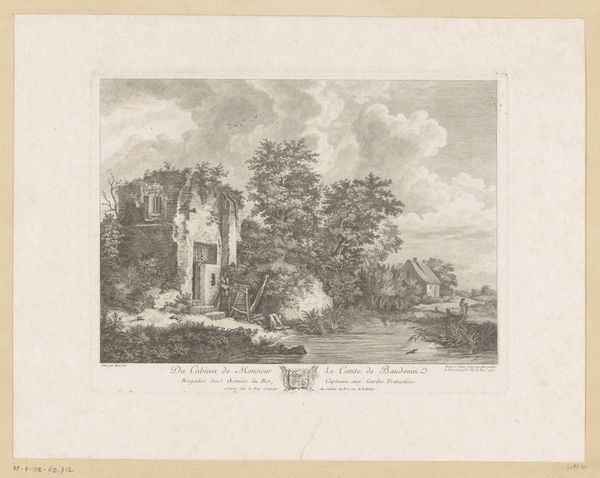
Dimensions: height 352 mm, width 469 mm
Copyright: Rijks Museum: Open Domain
Jean Jacques Le Veau made this print of the Wittevrouwenpoort in Utrecht. It was created in the Dutch Republic sometime in the late 18th century. Here we see an image of the Dutch countryside. However, this is far from a neutral depiction of a rural idyll. Prints like this served a crucial purpose, shaping perceptions of the Dutch Republic. We see the Dutch countryside presented as orderly, prosperous, and industrious. The people in the image are going about their business, moving goods and livestock. The trees are neatly planted. The buildings are orderly and well-maintained. This is a vision of a society in control of itself and its environment. It speaks to a sense of national pride and progress during the Dutch Golden Age. To truly understand the print’s meaning, we can turn to archives and historical texts, examining its role in shaping Dutch identity and national ambition. This reveals how art is deeply embedded within social and institutional contexts.
Comments
No comments
Be the first to comment and join the conversation on the ultimate creative platform.

